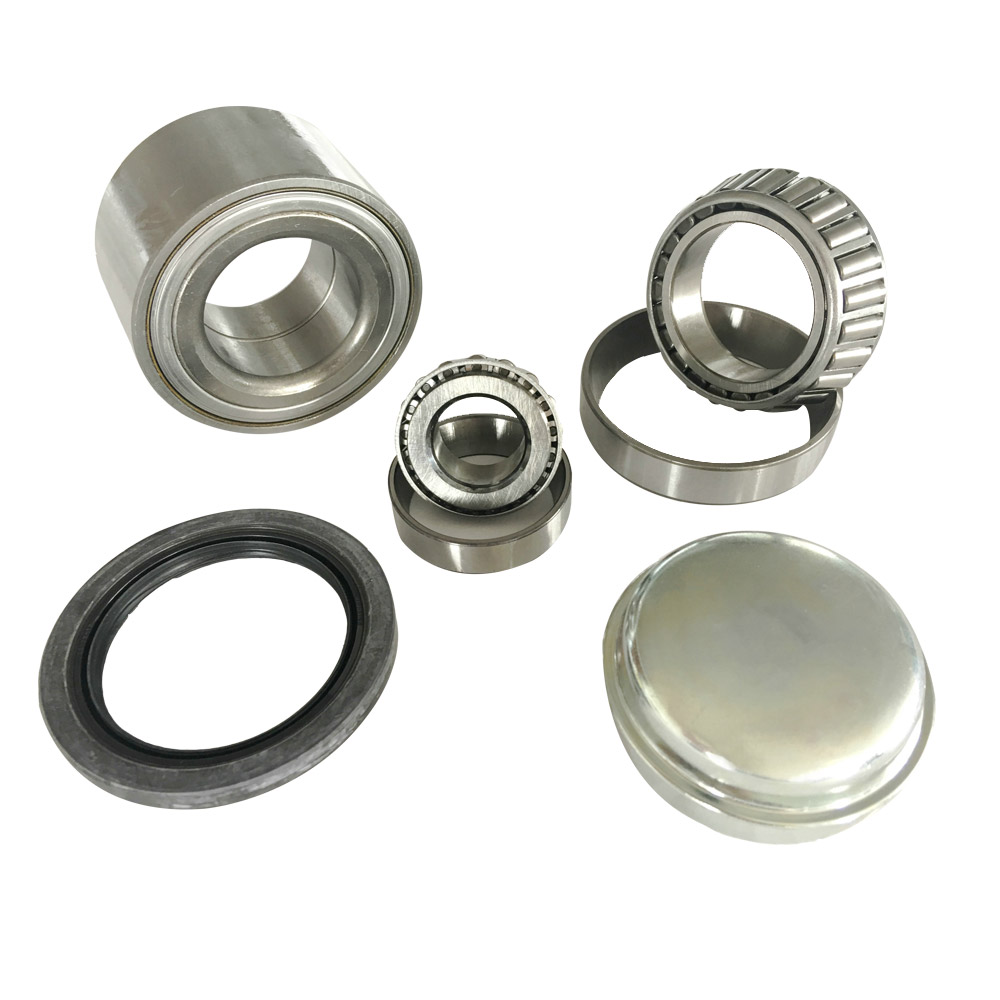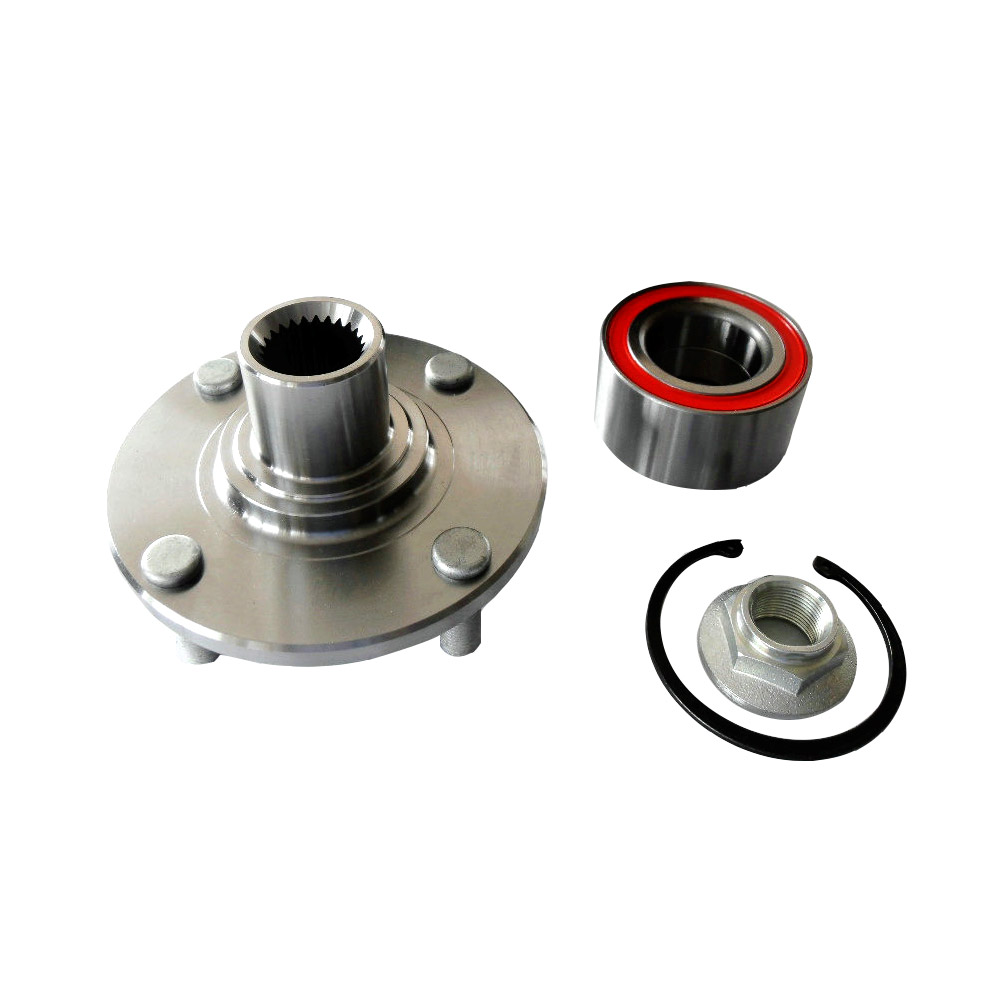A wheel hub bearing is one of the most critical components in a vehicle’s suspension and wheel assembly. It ensures smooth wheel rotation, supports the vehicle’s weight, and contributes to overall driving stability. Despite being designed for long-term durability, wheel hub bearings are subjected to significant stress, friction, and environmental exposure—making them prone to wear and failure over time.
Recognizing the early signs of a failing wheel hub bearing is crucial for maintaining vehicle safety and performance. Ignoring the symptoms can lead to severe mechanical damage, reduced handling control, and even wheel detachment in extreme cases. This article explores the common symptoms, causes, and diagnostic methods for identifying a failing wheel hub bearing.
1. Understanding the Function of a Wheel Hub Bearing
Before identifying the symptoms of failure, it’s essential to understand the function of the wheel hub bearing.
A wheel hub bearing connects the wheel to the axle and allows it to rotate smoothly with minimal friction. Modern vehicles often use integrated hub assemblies, which combine the bearing, hub, and sometimes the ABS sensor into a single sealed unit.
Primary functions include:
- Supporting the vehicle’s load while the wheels rotate.
- Ensuring proper wheel alignment and rotation.
- Reducing friction between the wheel and axle.
- Enabling accurate functioning of ABS and traction control systems.
A worn or damaged bearing compromises these functions, resulting in noise, vibration, and handling issues.
2. Common Symptoms of a Failing Wheel Hub Bearing
Detecting a failing wheel hub bearing early can prevent costly repairs and ensure safe driving. Here are the most noticeable warning signs:
(1) Unusual Grinding or Humming Noise
One of the first indicators of a bad wheel hub bearing is a grinding, humming, or growling sound coming from the wheel area.
- The noise often increases with speed and may change pitch when turning.
- It typically sounds like metal rubbing on metal due to worn-out internal bearing surfaces.
- If the sound changes when you turn left or right, it can help pinpoint which side’s bearing is failing.
Tip: A humming noise that remains constant regardless of speed or direction may indicate tire or transmission issues instead.
(2) Steering Wheel Vibration
A worn or damaged bearing can cause vibrations in the steering wheel, especially at higher speeds.
- This occurs when the bearing loses its precision alignment, leading to uneven wheel rotation.
- Over time, this vibration can become more pronounced and make steering control more difficult.
If the vibration feels worse when cornering or accelerating, it’s often linked to the affected wheel hub.
(3) Uneven Tire Wear
Wheel hub bearings help maintain proper wheel alignment. When they start failing, the wheel can tilt or wobble slightly, causing uneven tire wear patterns.
You may notice:
- One side of the tire wearing faster than the other.
- Feathered or scalloped tread patterns.
- Reduced tire lifespan and compromised traction.
Regular tire inspections can help identify early bearing wear before it becomes a major problem.
(4) Wheel Play or Looseness
Excessive wheel play (looseness) is a direct sign of bearing wear.
When the internal components of a bearing wear down, the hub assembly can no longer hold the wheel tightly in position.
To test this:
- Jack up the car so the wheel is off the ground.
- Grip the tire at the 12 o’clock and 6 o’clock positions.
- Try rocking it back and forth.
If you feel noticeable movement or hear a clicking sound, it’s a strong indication that the wheel hub bearing is worn and needs replacement.
(5) ABS Warning Light
Many modern vehicles have ABS (Anti-lock Braking System) sensors integrated into the wheel hub assembly.
If the bearing or sensor inside the hub becomes damaged, it may trigger the ABS warning light on your dashboard.
Common reasons include:
- Damaged ABS tone ring caused by bearing wear.
- Faulty sensor due to excessive vibration or heat.
- Intermittent signal from the bearing’s internal magnet.
If the ABS light comes on along with other wheel-related symptoms, the hub bearing assembly should be inspected immediately.
(6) Pulling or Wandering While Driving
A failing wheel hub bearing can affect wheel alignment, leading to the vehicle pulling to one side or feeling unstable during driving.
This misalignment happens because the bearing can no longer maintain consistent wheel position and rotation.
Other possible causes like brake caliper sticking or uneven tire pressure can create similar symptoms, so a professional diagnosis is recommended.
(7) Clunking or Knocking Noise When Turning
When a bearing becomes severely worn or loose, you may hear clunking or knocking sounds, especially when turning or driving over bumps.
This indicates excessive play in the wheel hub assembly, which can affect steering precision and stability.
If left unchecked, the wheel could eventually separate from the axle, creating a serious safety hazard.

3. Causes of Wheel Hub Bearing Failure
Understanding why bearings fail can help prevent premature wear.
Common causes include:
-
Poor Road Conditions:
Potholes, rough terrain, and frequent off-road driving can put extra stress on bearings. -
Improper Installation:
Over-tightening or under-tightening the axle nut can damage the bearing’s internal structure. -
Contamination:
Dirt, water, and road salt can penetrate seals, causing corrosion and lubricant degradation. -
Lack of Lubrication:
Although most modern bearings are sealed and maintenance-free, older or exposed types can fail if lubrication dries out. -
Overloading:
Carrying excessive weight strains the wheel hub assembly, leading to accelerated wear. -
Low-Quality Components:
Cheap or counterfeit bearings often lack proper heat treatment and sealing, making them more prone to failure.
4. Diagnostic Methods for Wheel Hub Bearing Issues
While drivers can identify early symptoms, professional mechanics use more precise diagnostic methods to confirm bearing failure:
(1) Road Test
A mechanic will drive the vehicle, listening for humming, grinding, or rumbling noises that change with speed or turning direction.
(2) Wheel Movement Check
The wheel is raised and manually checked for play or looseness, as mentioned earlier.
(3) Stethoscope Test
Technicians may use an automotive stethoscope or vibration analyzer to pinpoint noise frequency and source location.
(4) ABS Signal Analysis
If the ABS light is on, a diagnostic scan tool checks for sensor faults or signal interruptions in the hub assembly.
(5) Infrared Temperature Test
An overheated wheel hub (caused by excessive friction) can be detected using an infrared thermometer during inspection.
These methods help determine whether the bearing alone is faulty or if other components like the axle or hub need replacement as well.
5. The Dangers of Ignoring a Bad Wheel Hub Bearing
Driving with a failing wheel hub bearing can cause:
- Increased tire and suspension wear
- Poor handling and braking performance
- Reduced fuel efficiency due to friction
- Potential wheel detachment in severe cases
In short, a bad wheel bearing compromises both vehicle safety and comfort. Immediate inspection and replacement are necessary to avoid catastrophic failure.
6. Preventive Maintenance Tips
While wheel hub bearings are largely maintenance-free, proper care can extend their service life:
- Avoid Overloading Your Vehicle: Keep within the manufacturer’s recommended weight limits.
- Drive Smoothly: Reduce impact from potholes or curbs.
- Use High-Quality Replacement Parts: OEM or certified bearings offer better sealing and longevity.
- Regular Inspections: Check bearings during brake or tire servicing.
- Replace in Pairs: If one bearing fails, the opposite side is often close to wear and should be replaced together.
7. Conclusion
A wheel hub bearing may be small, but it plays a vital role in your vehicle’s safety and performance. Recognizing early symptoms—such as grinding noises, steering vibrations, wheel looseness, or ABS warnings—can help you act before a minor issue becomes a major repair.
By understanding the signs of failure and the importance of regular inspection, drivers can maintain smoother, safer, and more efficient rides. Replacing a faulty wheel hub bearing at the right time not only ensures mechanical reliability but also safeguards you and your passengers on every journey.






